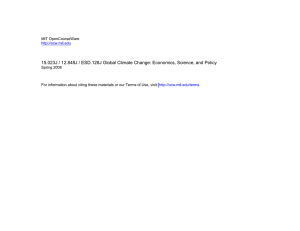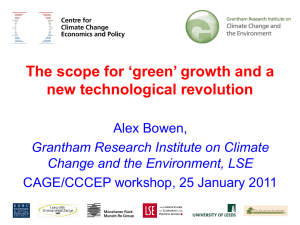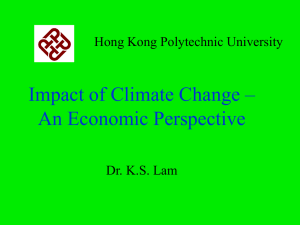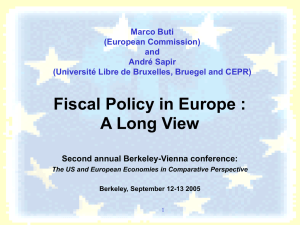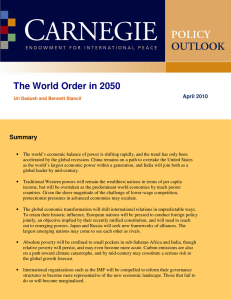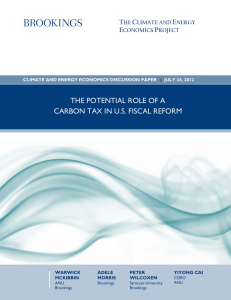feeding 9 billion maintaining the planet Jason Clay
advertisement
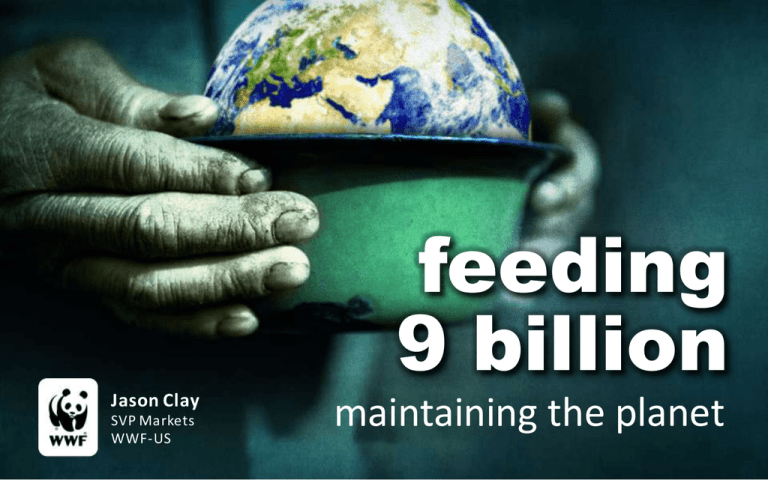
feeding 9 billion Jason Clay SVP Markets WWF-US maintaining the planet global food 40 years = 8,000 years Global trends by 2050 200 180 Income percent increase 160 140 120 100 Consumption 80 60 40 20 0 2010 Source: United Nations Population 2050 The China phenomenon Population at start of growth period Years to double GDP per capita1 Britain (1700-1855) 9M 155 US (1820-1873) 10M 53 China (1983-1995) 1,023M 12 India (1989-2006) 822M 17 1 Time to increase GDP per capita (in PPP terms) from 1,300 to 2,600 USD China doubling of GDP was 12x the speed of Britain during the Industrial Revolution at 100x the scale 400 million lifted out of poverty Source: Angus Maddison, University of Groningen Countries with > 5% GDP growth (2010-2011) Countries where China is a top trading partner Source: UN Comm Trade > 100 Countries have downgraded parks and PAs or taken them off the books entirely (1990-2013) Source: WWF PADDDtracker.org per capita impacts acceptable with 7 billion will not be with 9 billion we must make production more efficient and sustainable we need more from less we must shift our thinking from trying to maximize any one variable… …to optimizing the key ones the issue isn’t what to think it’s how to think food security is national security and, global trade is key Top food exporting countries, 2002-12 (oilseed & cereals) Drought-affected countries, 2012 yet, trade barriers for food are greater than any other sector by 2050 9 billion will need twice as much food 35% for food freeze the footprint of food Food wedges urban agriculture waste soil carbon genetics over & under consumption technology property rights better practices degraded land waste 1 out of 3 calories genetics “dance with the one that brung you” US corn yields Double-cross Single-cross hybrids hybrids introduced introduced 11 9 8 7 6 5 4 3 2 2010 2000 1990 1980 1970 1960 1950 1940 1930 1920 1910 1900 1 1890 tons per hectare 10 Sugar Bananas Corn Orphan crops palm oil millet peanut cowpeas cassava sugarcane plantain coco yam sorghum agriculture takes 70% of all water used by people 1liter of water = 1calorie better practices 100 times better which gives us more food? recognizing the best or moving the rest? Reward the best, or move the rest? number of producers government regulation voluntary standards performance shift worse average better rebuild degraded land 250 M hectares by 2030 on a finite planet, should consumers have a choice about sustainable products? or should all choices be sustainable? make sustainability the norm not the niche salmon aquaculture Global Salmon Initiative • Who: CEOs of 15 producer companies • How much: 70% of global production • What: 100% ASC certified by 2020 • How: a precompetitive approach ‒ One bad actor affects everyone ‒ Market access/license to operate ‒ Share performance data ‒ No premium Components of S&P 500 Market Value 100 83% 68% 32% percent 80 20% 19% 80% 81% 2005 2009 68% 60 40 32% 20 0 17% 1975 1985 Tangible assets Source: Ocean Tomo 1995 Intangible assets illegal illegal SPECIES MINERALS FISH FOREST PLANTATION tigers gold bluefin tuna pulp palm oil elephants coltan demersal fishes timber soy rhinos diamonds shrimp and prawns mangroves beef “If you don’t know where you’re going, any road will get you there.” think about it






